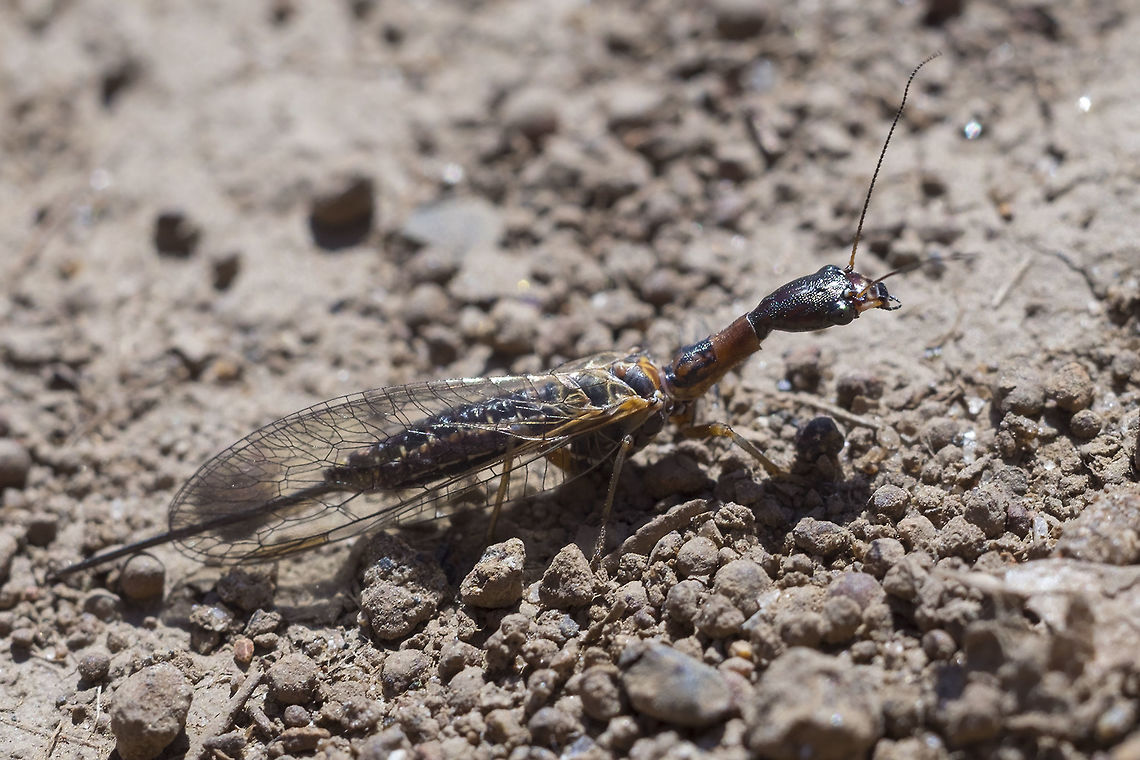
Snakefly - Agulla sp.
I've narrowed this down to Agulla herbsti or Agulla assimilis
with herbsti having a shorter stigma as the differentiator...
the only photos I could find are dried, pinned specimens, https://www.zoology.ubc.ca/~biodiv/entomology_archive/Raphidioptera/Raphidiidae/
I have a hard time finding much physical difference between the two...
No species identified
The species on this photo is not identified yet. When signed in, you can identify species on photos that you uploaded. If you have earned the social image editing capability, you can also identify species on photos uploaded by others.
By morpheme
All rights reserved
Uploaded May 13, 2018. Captured May 11, 2018 15:28 in Atwood Rd, White Salmon, WA 98672, USA.

comments (7)
Posted 7 years ago
https://www.jungledragon.com/wildlife/photos/animalia/arthropoda/insecta/raphidioptera Posted 7 years ago
I'll add some tagging and will have a look if I can find IDing info, but I'm afraid I don't have much for the Americas ...
Cheers, Arp Posted 7 years ago
" The opus magnum by the Aspocks is probably the best reference currently available...but very hard to obtain, with a major emphasis on male genitalia (thus not very useful for the vast majority of our field photos), and of limited utility for those who can't read German." LOL... Posted 7 years ago
Here's an example demo I created of individual variation/aberrations in one species:
https://upload.wikimedia.org/wikipedia/commons/7/78/Puncha_ratzeburgi_aberrations_-_collection_Naturalis.jpg
Posted 7 years ago
https://www.inaturalist.org/taxa/60043-Agulla-adnixa/browse_photos
Looks similar and almost all of those observations are exclusive to the west of the USA. Posted 6 years ago